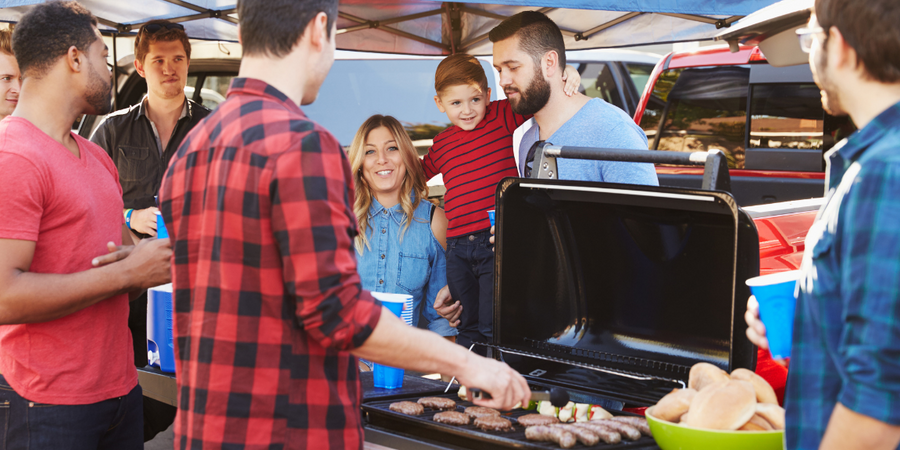Contact
Lindsey Sexton
Social Media Coordinator
Phone: 501-671-2398
Email: arsnaped@uada.edu
5 Tips for Tailgating

Food safety can be difficult to manage at times especially when we are away from our
own kitchen. Follow these 5 food safety tips for a winning tailgate experience.
Keep Hot Foods Hot
It is important for any meat or poultry to reach its food-safe temperature before being served. A food thermometer is the only reliable way to ensure food is safe to eat. Use the information below as a guide.
- Hamburgers and brats need to reach at least 160°F.
- Steaks and chops need to reach at least 145°F and rested for at least 3 minutes.
- If reheating an item, such as precooked hot dogs, cook to 165°F.
- Chicken breasts need to be cooked to at least 165°F.
If you are cooking at home beforehand or picking food up, safely transfer in an insulated
carrying case or cooler with heated inserts. Hot foods placed in an insulated cooler
should keep food hot.
Keep Cold Foods Cold
Keep bacteria at bay by putting perishable foods in coolers packed with ice. To do this, clean and sanitize your cooler the night before. Maybe even bring it inside to dry in the cool conditioned air.
Cold food should be stored at 40°F or below to prevent bacterial growth. This means placing plenty of ice or frozen ice packs in the cooler first. Then, place the items you want to be kept colder longer. Put in another layer of ice and your ready to go. Consider placing drinks and ready-to-eat snacks in a separate cooler since you will be accessing these more frequently.
Here's a video from Florida Department of Agriculture and Consumer Services to show you how.
Do Not Partially Cook Foods to Finish on the Grill
It is not okay to partially cook food before you plan to serve it. This practice simply helps bacteria multiply quicker.
Be sure to thaw or marinate meat or poultry in refrigerator and keep it 40°F or below
until ready to place it on the grill.
Avoid Cross Contamination
Keep fresh produce separate from raw meats and poultry. Use separate ice-packed coolers
for ready-to-eat foods, foods that need to be cooked, and drinks. And remember to
take a few bottles of water and soap so you can wash your hands before, between, and
after handling food.
Avoid Leftovers
Holding food at an unsafe temperature (above 40°F or below 140°F) is a prime cause of foodborne illness. Any items left unrefrigerated for more than two hours should be thrown away. Cook only the amount of food that will be eaten to avoid the challenge of keeping leftovers at a safe temperature.